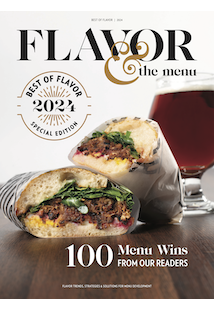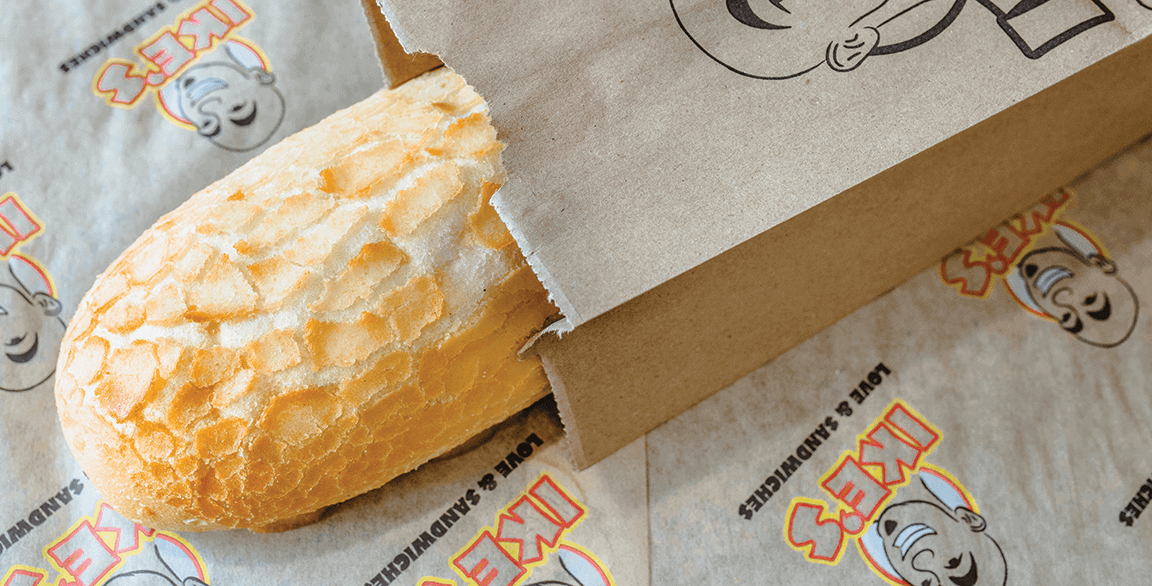
Bread is the centerpiece of French eating culture, says Frédéric Robert, executive chef of New York’s Chanson Le Salon, which reimagines French fine dining across each daypart. Every dinner at the restaurant begins with a bread service that features miniaturized versions of traditional French baguettes—perfectly tailored for social posts fixated on mini and maxi foods. “Bread is an act of sharing and comforting your guests, which is why we use it to start a meal at Chanson Le Salon,” says Robert.
Fundamental to so many cultures and long a standard, bread can be taken for granted in menu development, overlooked and unsung as a flavor hero. But today, chefs are seeing the value in leveraging bread as a means to meet a variety of flavor objectives.
Robert opts for a twist on tradition with his baguette service. Other chefs are seeking out unique alternatives that may be brand new to their customer base. Dutch Crunch serves as example, poised to make further inroads on menus nationwide. Called “tiger bread” in the Netherlands, where it originated, this take on white rolls features a crispy rice flour-and-sugar topping that crackles with each bite, giving sandwiches an exciting textural contrast.
It’s already a tried-and-tested option in San Francisco, where it’s a go-to carrier on many sandwich-shop menus. Ike’s Love & Sandwiches, which opened in the city in 2007, has made a name for itself by using Dutch Crunch as the basis for its sandwiches, driving the chain’s expansion into six states. With other chefs across the country taking note, will it be long before it becomes the next pretzel bread?
With bread trends evolving quickly, driven by a new generation of hip, modern bakers (look for the baguette tattoo) and quarantined-at-home sourdough experimenters, it’s more important than ever to incorporate memorable, comforting, high-impact breads on your menu.
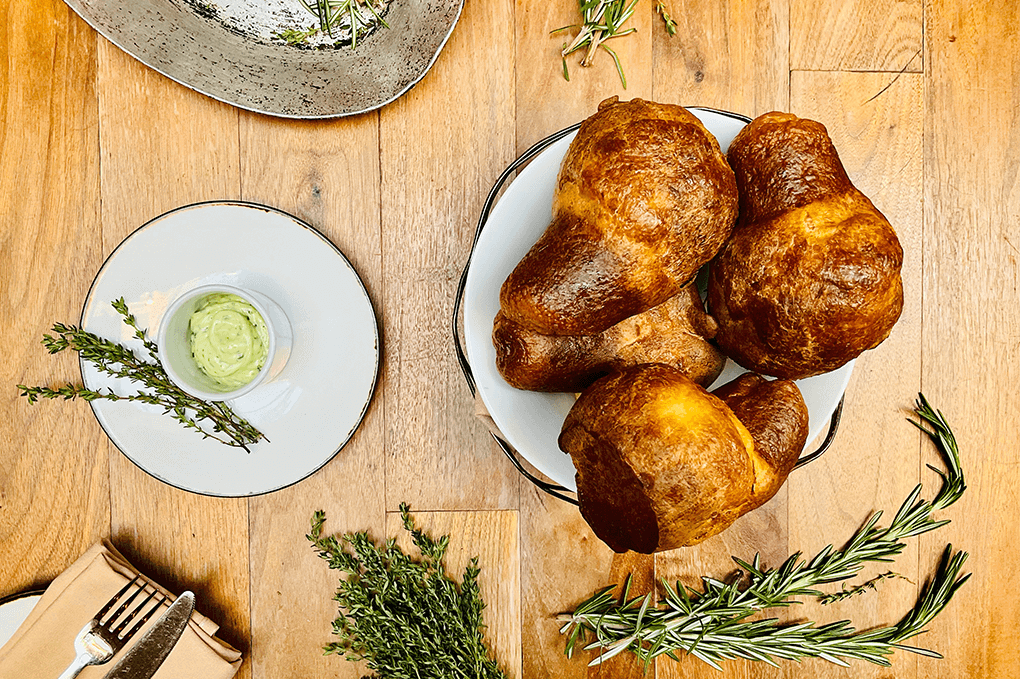 Photo Credit: Society Café
Photo Credit: Society Café Meals at New York’s Society Café, a subterranean spot tucked under the Walker Hotel, start with light and airy popovers served with herb butter.
BREAD COURSE 2.0
Housemade and cultured butter, hand-harvested sea salt, beef fat candle drips—these and other distinctive accompaniments are elements that elevate modern bread courses. At République in Los Angeles, ordering pan drippings from items cooked in the wood-fired oven adds rich decadence to the bread service.
At Jazz era-inspired Society Café, in New York’s Walker Hotel, Manuel González Charles, executive chef, updates classic popovers for a complimentary, dine-in bread course. The popovers are exceptionally airy, served with herb butter and are an ideal light, pre-dinner pairing with a cocktail. Popovers do double duty, also appearing on Society Café’s breakfast and brunch menus, dayparts that are a must for a hotel restaurant. They’re used in the Truffle BEC (Bacon, Egg and Cheese), stuffed with silky truffled scramble eggs and applewood-smoked bacon. Society Café may be an outlier when it comes to free bread service, however, which was already on the decline prior to the pandemic. Today’s crunch on profit margins has only sped up the trend of charging for it. Standout touches can help justify the price diners are asked to pay.
At famed chef Alfred Portale’s eponymous Portale restaurant in New York, the Pane di Casa earns its menu price by incorporating house-milled grains that give the warm loaf a richer texture and greater depth of flavor. House milling is becoming more common back of house as countertop grain millers become more available and cost effective. Restaurants are tapping into their farmer networks to source unique varieties to showcase in breads or are using spent grains from nearby breweries and distilleries.
Source: Datassential, 2022
MILK BREAD’S MOMENT
Asian-inspired breads have been making impressive headway on U.S. menus in recent years—think bao and naan—but the hottest option right now may be Japanese milk bread. This exceptionally light and fluffy take on white bread has been making its way from hip lunch spots and izakayas to major chain menus across the country.
At San Francisco’s New American restaurant Cassava, ubiquitous avocado toast is taken to the next level by constructing its build on a base of housemade shokupan, the quintessential loaf-style version of milk bread. Kris Toliao, executive chef, applies the “yudane” method, using boiling water to convert starch to gelatin, which yields that all-important pillowy-soft texture. The shokupan is sliced, toasted, buttered and topped with avocado, burrata and freshly foraged greens; customers can go all-out with an optional fried egg or freshly shaved Périgord truffles. The combination of housemade milk bread and exceptional toppings make this dish a main event on breakfast and brunch menus.
Modern open-fire restaurant Gozu, also in San Francisco, similarly uses milk bread as a carrier, in this case in its Wagyu Sando. The aonori milk bread pull-apart rolls lift the flavor experience. They are baked close together in a pan, topped with aonori seaweed flakes, glazed with butter and tare (a thick, sweet soy sauce) and finally grilled over binchotan charcoal before they are served with an ever-changing array of saucy dishes, including scallops and smoked Wagyu belly with green garlic, truffles and pea shoots.
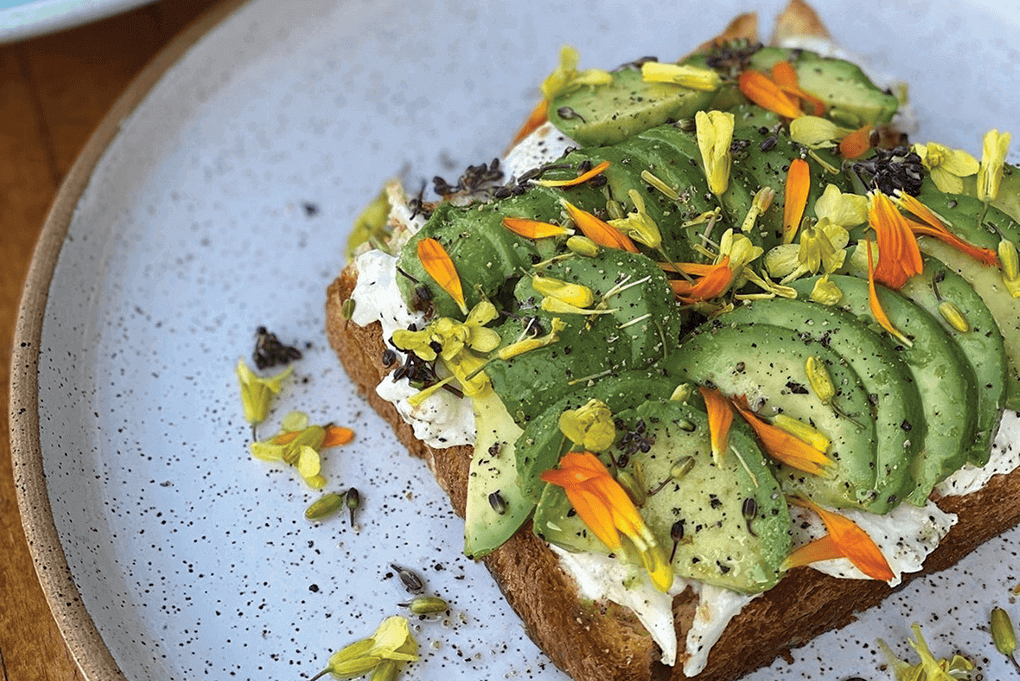 Photo Credit: Cassava
Photo Credit: Cassava Japanese milk bread forms the base of the upscale Avocado Burrata Toast at San Francisco’s Cassava, where hand-foraged greens and optional Périgord truffles take the dish to new heights.
KNEAD TO KNOW BREAD TRENDS
- GLUTEN-FREE OPTIONS have taken over menus, increasing their menu penetration 102% in the past 4 years.
- BAO, CHALLAH, GARLIC NAAN, LAVASH and ROTI are the fastest-growing globally inspired bread options on menus, with each seeing double-digit boosts in the past 4 years.
- QUICK BREADS, which tend to be easier to execute in a staff-strapped kitchen, show up on menus as biscuits, beer breads, corn breads, Irish soda breads and more. Of these, buttermilk biscuits grew 40% on menus in the past 4 years, driven by the continuing popularity of Southern cuisine concepts, along with the growth of breakfast sandwiches.
- CLASSICS RETURN: Potato rolls, garlic knots, toast, sourdough and marble rye are all growing at double-digit rates in menu mentions.
Source: Datassential, 2022
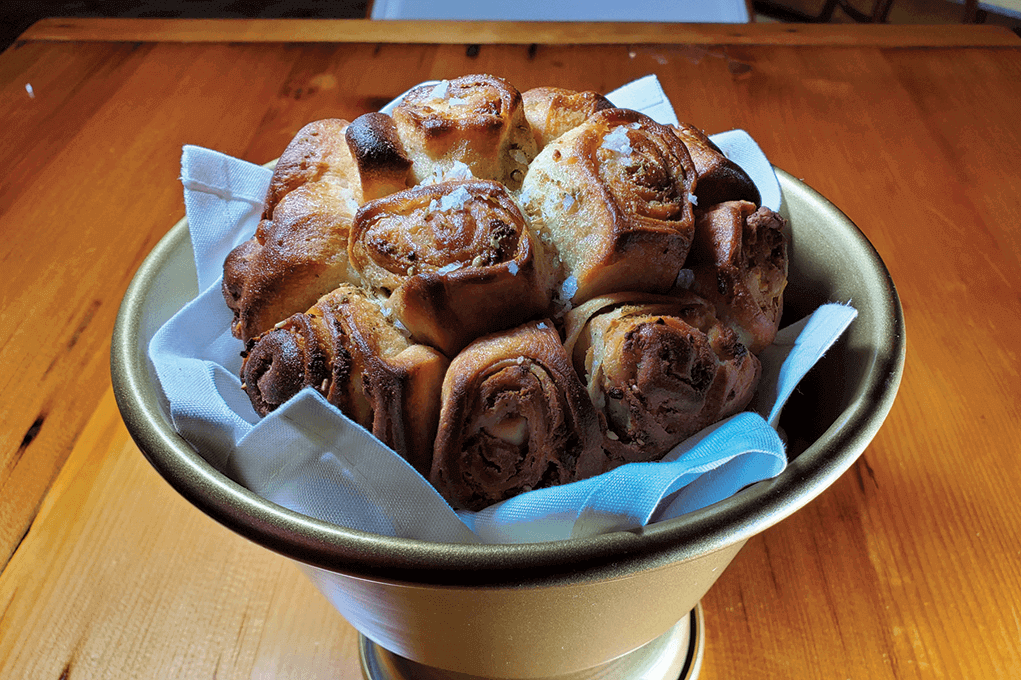 Photo Credit: Dagon
Photo Credit: Dagon At New York’s Dagon, the pull-apart Kubaneh is served as a bread course in an attention-grabbing golden chalice.
WIN-DOUGH TO THE WORLD
Five bread and wrap inspirations from across the globe:
- KUBANEH: A traditional pull-apart roll popular in Yemen and Israel, it is made from an eggy, enriched dough.
- In New York, Dagon’s Ari Bokovza celebrates his Israeli heritage with pull-apart kubaneh served with labneh.
- PAO DE QUEIJO: These Brazilian cheese rolls use tapioca flour to deliver a light, crispy texture; they have been making inroads on restaurant menus and retail shelves in the United States.
- Walt Disney World’s Skipper Canteen features Pao de Queijo with chimichurri cream cheese on its “not so secret menu.”
- PAO/PAV: India has its own version of pao (or pav), a soft bread roll first introduced by Portuguese traders that today is most commonly used in street-food sandwiches.
- Soft, buttery pao is a side-dish option at New York’s Dhamaka.
- BING: Of this wide range of Chinese flatbreads and biscuits, scallion pancakes are perhaps the most well-known among American consumers.
- At Chicago’s Parachute, the bing bread from Beverly Kim, co-owner/chef, is a hallmark recipe, helping propel this Top Chef alum into stardom. Inspired by baked potatoes, this yeasted bing features potatoes, bacon, sharp white cheddar and scallions. It’s topped with sesame and soy and is served with sour cream butter.
- INJERA: This sour, fermented flatbread is commonly used as a base for traditional meats at Ethiopian restaurants. Today, more chefs are turning to injera—packed with the ancient grain teff—as an intriguing and flavorful carrier.
- Spice Bridge Global Food Hall’s Ethiopian restaurant Wuha, located in Tukwila, Wash., uses injera as a carrier for on-the-go vegetarian and beef rolls.

